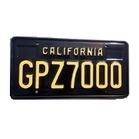Search the Community
Showing results for tags 'coils'.
-
Back when I started using the AT PRO back in 2009 Garrett recommended doing a factory reset when you changed to a different coil on the ATP my question on the Garrett 24K is this also the recommendation when changing to a different coil, or is performing a factory reset UN necessary on the 24K when changing to one of the different coils still learning the 24K and liking it a lot
-
With the release of the Xterra pro showing that all these coils are only limited to a chip and not the coil itself, it should be possible to hack the chip or override the chip with another. When I was younger this was easily done in gaming systems to make copied DVDs work to play copied games. Anyone know if this might be getting “worked” on for the coils? Small market though, maybe not worth the time of an ambitious electrical engineer unless they were an avid detectorist. @phrunt I’m winking at you 😉😁 You seem to have the “know how” or the “contacts”, plus all the coils😂
-
Yesterday I went to my beach and left the 6" Equinox coil on for an extended hunt. I had used it a couple of days before on a high iron beach so that I could hear targets clearly. Yesterday's hunt turned out to be an experimentation of sorts. What could I really find on a 'tough' beach with the little coil. I've found gold jewelry on the beach with it before. When I first got the coil I wasn't able to go nugget hunting so I went to a beach. Right out of the box as they say I found 4 little gold rings many years ago. I pretty much put the little coil away over the years in favor of the 15" coil and occasionally the 11" coil. Coverage is the operating logic to that. I feel 'naked' without the big coil. Yesterday I was willing to experiment. After selecting the frequency and then ground balancing I was able to go to 25 on the sensitivity/gain. This let me hear my threshold and without chatter so it was a matter of swing speed. There weren't a whole lot of targets so each time I'd find one I would try to find a patch. I managed to find a couple of them as you can see and some interesting targets in the 1.5 hour hunt. The rack on the left is one of the largest objects I've found on this beach. It was down about 8" and it weighs about 5 lbs. Some of the quarters were down about the same depth. The knife blades were iffys I think because they are mostly stainless steel. The silver Thailand earrings were in the wave wash and are very light at 3.2 g and were found together as displayed. After a bit of learning the capabilities of the little coil again I then wondered what is best. Do you take a small coil and use it at maximum sensitivity or do you take a larger coil and turn down the gain? This would go for other types of detecting as well. This is certainly a reason to have multiple coils.
- 10 replies
-
- 14
-

-
- jewelry detecting
- coils
-
(and 1 more)
Tagged with:
-
-
For those of you thinking about buying yourself a bigger coil for your Equinox, here's how big they are compared to a size 10 foot (see table below).. I find that measurements on paper (like 15x12'' or 15'' round) are hard to picture in my head without something to compare them to.. Hope this helps.. 🤪
-
I have a question regarding Whites DF coils on the TDI Pro or 'sl' and other variations,i am aware the difference between say a DD and Mono coils etc,but how would the experts describe the DF coils as in the stock and 7.5'' DF coils are these classes as 2 Mono coils within one another or have i got this completely wrong. As far as i can tell both the inner and outer coils within the coil case operate complete independent from one another,anyone have knowledge on how one would describe these DF coils,of course i could be totally wrong and would like some help from the electronic whizzkids 🙂 Many thanks
-
The chart shows current GPX-6000 coil sizes, weights, and areas. I hope this chart can help you find out which coil to bye in the future. Phrunt- the 6 X 8.5 specifics have been added to the chart.
-
While reviewing some more of my archived files I found the coil winding specifications for one of White's Electronics BFO metal detector coils. Data was provided by the White's Factory. This coil was called the "Triplet Coil". It was manufactured in the late 1960's and early 1970's. My information is from May 1969. During this period there were several BFO coil sizes offered: a 3-inch coil for nuggets, a 6-inch coil for coins and a 12-inch coil for large objects. The Triplet was designed to combine both the standard 6-inch coil and the 3-inch nugget coil with an additional 2-inch coil for added sensitivity for small objects. Single coils were wound using a wood based enclosure. The Triplet Coil was encased in a molded plastic housing. For those of you who have a vintage White's BFO metal detector and would like a combination coil or those of you who wish to build a replica of a vintage White's BFO metal detector I have attached a PDF of the winding details for your viewing pleasure. BFO Triplet Coil winding instructions.pdf
-
trying to decide , 11inch coil x35 or the 11x13 x35 anyone have experience with both
-
I'm looking for opinions on the Minelab 6 inch vs the Coiltek 10x5 for my Nox 600. I search a lot of trashy and brushy sites. Anybody have any experience with both coils? Any opinions? Thanks.
-
Hello Guys! How Do Different Coils Affect The Performance Of A Metal Detector?
-
Curious if the Infinium coils are compatible with the Seahunter. I hunt some crappy ground where a pi would be usefull and the mono coils get slaughtered with emi. My thoughts the 5x10 would do well not only for emi but because it is a closed coil it will be easier to work the gravel and rocky beds.
-
So most detector companies make different coils for their machines. So why don't they optimize programs for specific coil sizes? For instance with the Equinox would using Park1 with the 11" work just as good if you changed to the 6" changing nothing. You could go into Coil Size in settings and designate what coil your using and once done the detector would change each factory program to be optimized for the size coil you picked. I know optimized for one site might not be optimized for another, but factory settings have to be set where they are for a reason. It just seems that changing coils should require Sensitivity, Recovery, and maybe even frequency tweaks etc. to get the most out of a smaller or larger coil. It seems like a selling point to me.
-
GPX 6000 coil makers information Nugget Finder Xceed 6000 series Nugget Finder has now announced there will be 3 Minelab approved coils in the Xceed 6000 range at this stage. It looks like there will be Mono coils in 8x6", 12x7" and 16x10" sizes, which represent some great options for bushy or tight spots! If you would like to be kept in the loop regarding pricing and release date, visit our website here and click on the size or sizes you are interested in and hit the 'Notify me' button to receive news as it comes in! Coiltek Goldhawk Gpx6000 Series Coils Will be available in 3 sizes - 10x5", 9" and 14x9" Mono configuration Precision pinpointing and great manoeuvrability Fully approved by Minelab Visit our website here and click on the size or sizes you are interested in and hit the 'Notify Me' button to receive info on pricing and release date as it comes to hand. Once we have firm intel from Coiltek we will begin taking pre-orders!
-
I looked for this topic before posting so I wouldn’t duplicate something that’s already been discussed. Nothing came up. I remember back in the day, you used to have to send the coil in with the detector when having it repaired so they could also tune it (the coil) to the machine. This was on those with Auto GB. According to Vince Gifford at Tesoro, Manual GB didn’t care because you could manually “tune” it. I was also told that as a result, accessory and aftermarket coils won’t work as well as the original coil that came with it for that reason. Is this still true? Thanks! Walt
-
Searched around but still can't decide. Leaning coiltek for now. I mostly hunt for coins and small token type targets. Older parks that are slightly over grown and fresh water beaches and streams plus i can hunt some public ground that's huge. It's an old lead mine area that was active from 1830-1930 or so. Wooded/hilly with sink holes everywhere and has to have building sites that are long gone. From what I've read the coiltek is close but not as deep as the 6" M/L coil. But in water i would sure like the added coverage. Another thing i read here is the coiltek middle is not as receptive as the heel and toe. How would that effect swing pattern? Thanks.
-
Seems like all the recent interest in coils has got Minelab interested in looking at being clever with some coil designs themselves. Nice to see Minelab acknowledge in writing the power of spiral windings too, something some of us have been saying for years is real, now there is no debate. Seems Bruce Candy himself agrees with what some of us have been saying over and over - they work just fine in mild and medium soil too. We already saw the horizontal/vertical spiral winding idea in an unpublished patent, but it's published now. This is for hotter ground. Idea being you get the advantage of a spiral (increased sensitivity) without the disadavantages (spurious signals in highly saturable soils) by turning the front/back ends of the coil vertical to decrease the flux density going into the soil in parts of the coil that aren't required for side to side motion. This one (US 20220221610 A1): There are a number of other winding configurations in the patent as well. I just noticed an International patent that hasn't been filed in the US yet too (WO2022126185A1) with some pretty crazy coil designs. From what I gather these are actually concentric coils. They seem to have up to 2 to 5 "groups" of RX and/or TX windings to null out what I guess is spurious saturation signals, conductive ground, and EMI. But then they seem to just concentrate mainly on saturation. But I'm just taking a break from work and eating, figured I'd look up patents while I sit here, so I don't have time to do more than just selective scrolling through this extensive document. I scrolled past some talk of such coils designed with 2 cables to the control box too. Here are some odd concentric "noise cancelling" coil cross sections from this patent: There are some apparant performance graphs too which I guess relate to depth, but they are unlabeled so I'm not sure what they mean until I have time to read through everything. So I'm not going to post them because I have no clue what they represent right now and I gotta head back to work.
- 10 replies
-
- 19
-

-

-
Well, I figured out what that little dimple is on the front end of the 14 inch coil - it makes a perfect nugget holder so they don’t roll off for pictures, and they fit the little dimple perfectly. This thing is really good at finding them, I found patches all over the place, deep ones too!😉 First weekend out with it, And it’s finding birdshot all over the place. At least I’m using it right! I really like this coil and see being on my detector a lot. One thing I figured out with using it, don’t extend it all the way forward, sure makes the front and lighter. It’s also working well with my gear, pick stays in a holder behind me. I could also use my cell phone for mapping while using the detector, Guess that’s what the DD is best at. One other suggestion, I tested it and was able to use an Apple tag on the detector to help track it if it ever gets stolen. I imbedded it in the bottom of the case, and the tag does not seem to interfere with the detector, Even when using the mono coil. Just a thought if you were concerned about somebody “borrowing” it. If you’re worried about it being on the detector during use, another option is just put it in when you store the detector.
-
Responding to Peter in SA. Back in the mid 1980s I had been involved in the introduction of the Minelab GS15000 metal detector at Wedderburn in central Victoria. The early Minelab crew were a bunch of clever people from Adelaide university who got together to produce an Australian made metal detector which could challenge the big American companies. Wedderburn was chosen for testing and development due to its reputation of having very mineralized, difficult soil conditions. A number of Australian built detectors had failed to live up to expectations, defeated mainly by the hot soil conditions in Western Australia and central Victoria. The GS15000 proved to be a better machine for these conditions than its competitors and soon gained acceptance throughout the gold detecting fraternity. Craig Hughes, who was part of that early team came up with the idea of a coil towed behind an ATV. An area near the famous 'potato patch' just out of Weddurburn was chosen for testing, using a Honda three wheel ATV (horrible unstable beast of a machine). The coil was fairly small, but I can't recall the exact size. A GS15000 provided the electronics, and although noisy, did work with a small bit of gold recovered. (a few grams) Even though the manual ground balance made for uncomfortable detecting, the concept had been proven, much to our surprise. In 1987 I was involved with the testing of the GT16000, which was the first ever automatic ground tracking. This machine was a major breakthrough and really put Minelab on the map as a serious contender for the title of the world's best gold detector. It dawned on me that the feasibility of tow detecting was a reality now that a detector could stay balanced automatically, and I contacted Don McCoy, one of the original Minelab team and asked him to build me a coil suitable for towing. The result was a rectangular coil about 3' x 2' which was very stable and sensitive. I purchased a Yamaha 4 wheel ATV as a tow vehicle and with the addition of a suppressor managed to keep the EMI to a minimum. The first day of testing yielded a 6oz lump, which was a big surprise, and paid for the ATV in one hit. I sent Don some nice specimens as payment for the coil. I later sold that coil through Miners Den in Melbourne when the SD2200 was introduced. The SD2200 was of course the first auto ground tracking pulse induction detector, and naturally I soon made plans to adapt this concept to 'sledding'. John Hider-Smith, Ian Jaques and myself had been involved in prototype testing of Minelabs first pulse induction detector, and Bruce Candy had taught john how to wind mono coils. One of Johns coils was used in the first PI tow coil testing where we discovered that a 4 stroke engine was not feasible due to the high susceptibility of PI to EMI. With experimentation we discovered that diesel was the way to go as no spark was required for the engine to run, and an isolation switch for the alternator solved any EMI problems. We later used a GPX4000 which worked even better. I have to close now due to having to shut down internet but will add further details later.
- 11 replies
-
- 19
-

-
I have 2 coils on my Tejon. 8x9 conentric I use in high trash areas and parks (same thing) and a 10x12 i use for woods and fields. I got lazy and left the widescan on and hit a local park and came across bottle cap after bottle cap and could not find a good tone break to cut them out without losing too much range. I saved a couple and tucked them in my back yard 6" down and did a quick test. I set my 2nd discrim for break on the widescan and the primary for the concentric and there is a huge jump between them. Both discrim match up on other items such as coins and rings, pull tabs. Note that both coils actually ground balance the same and the widescan can pick up the tiniest pieces of lead and foil. I have found lead pellets from a pellet gun 4-6" down with it. I can also place a cast iron hammer head half over a dime and still hear just the dime though broken signal It's there. So I am really stumped on the bottle caps. Maybe someone here knows why.
-
I didn't really know where to put this but for Nel coil fans such as myself it looks like they're coming back! I really hope so. They have updated their website with this notice. It's sad what has happened to them but I'm glad it looks like they're going to survive it as a company.
-
Hi all, I just ordered a NEL Thunder coil for my also new Notka Makro Simplex+. This coil has a straight shape center receiving area. Other coils have a football (American type) shaped receiving area. I can't find any discussion on these two types of constructions. Does anyone know what each shape does? Like specifically, bennifits and differences? I can only speculate as I'm not very knowledgeable on this. I am thinking the NEL Thunder may have even sensing front to rear, and maybe narrower field which may be able to separate slightly better. The football shape coils I am thinking, may have a different field shape and may do something different. All this is speculation. However, it is this Thunder coil that is different than most and I'm curious as to what this coil does in it's detection field. For me, the coil has a lighter weight and larger area than other options. I'm searching dry sand and open park areas. Maybe even waist deep water. This shape and size is ideal for me. And the construction is new to me, just so you know. Thanks! TG
-
Questions regarding NEL coils for those that might know.----I understand that production of NEL coils has ceased at the NEL plant & service center (because of the war in Ukraine).-----Is the supply of these coils drying up that are in the "pipeline" (at distributors)?----Is the prices on NEL coils expected to increase because of this?-----Any info regarding this would be much appreciated.













.thumb.jpg.9501d7a699f9785c7046c0f0edeb3302.jpg)











